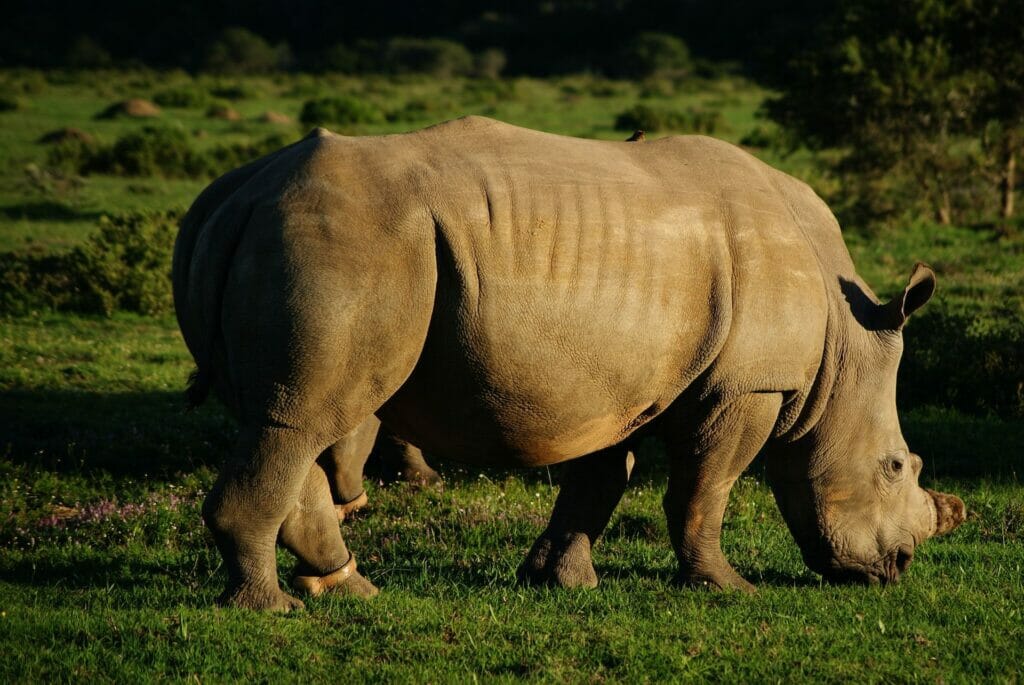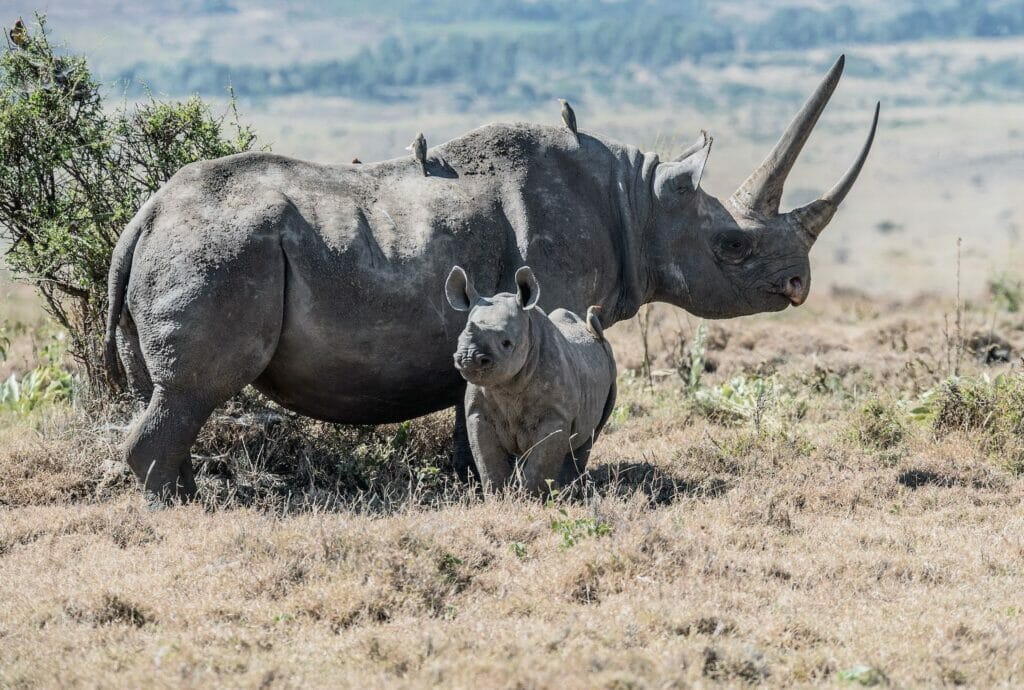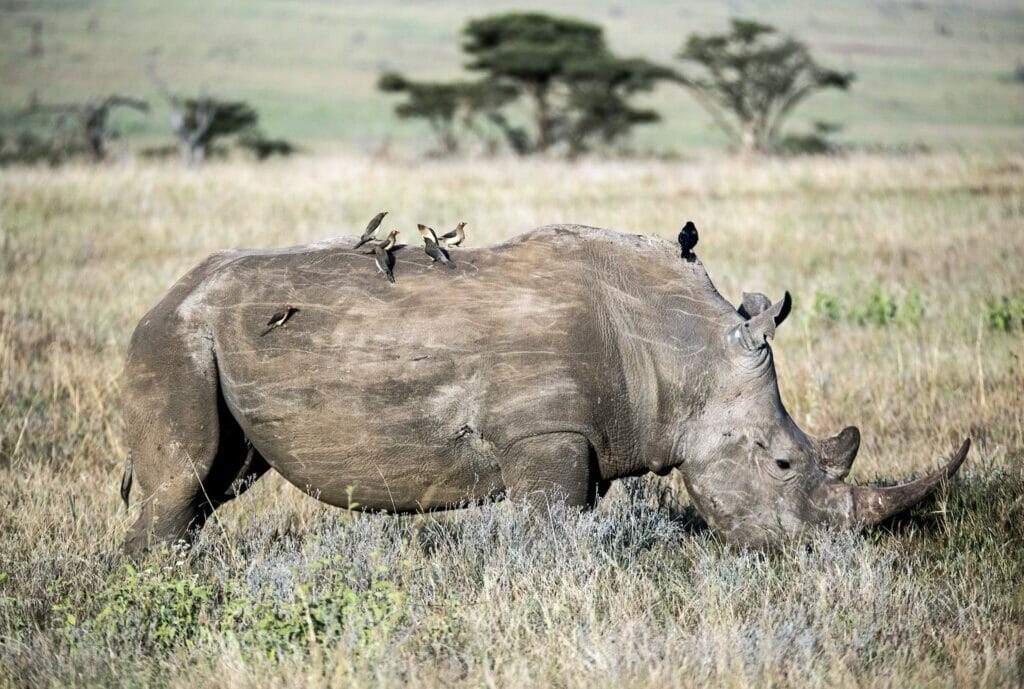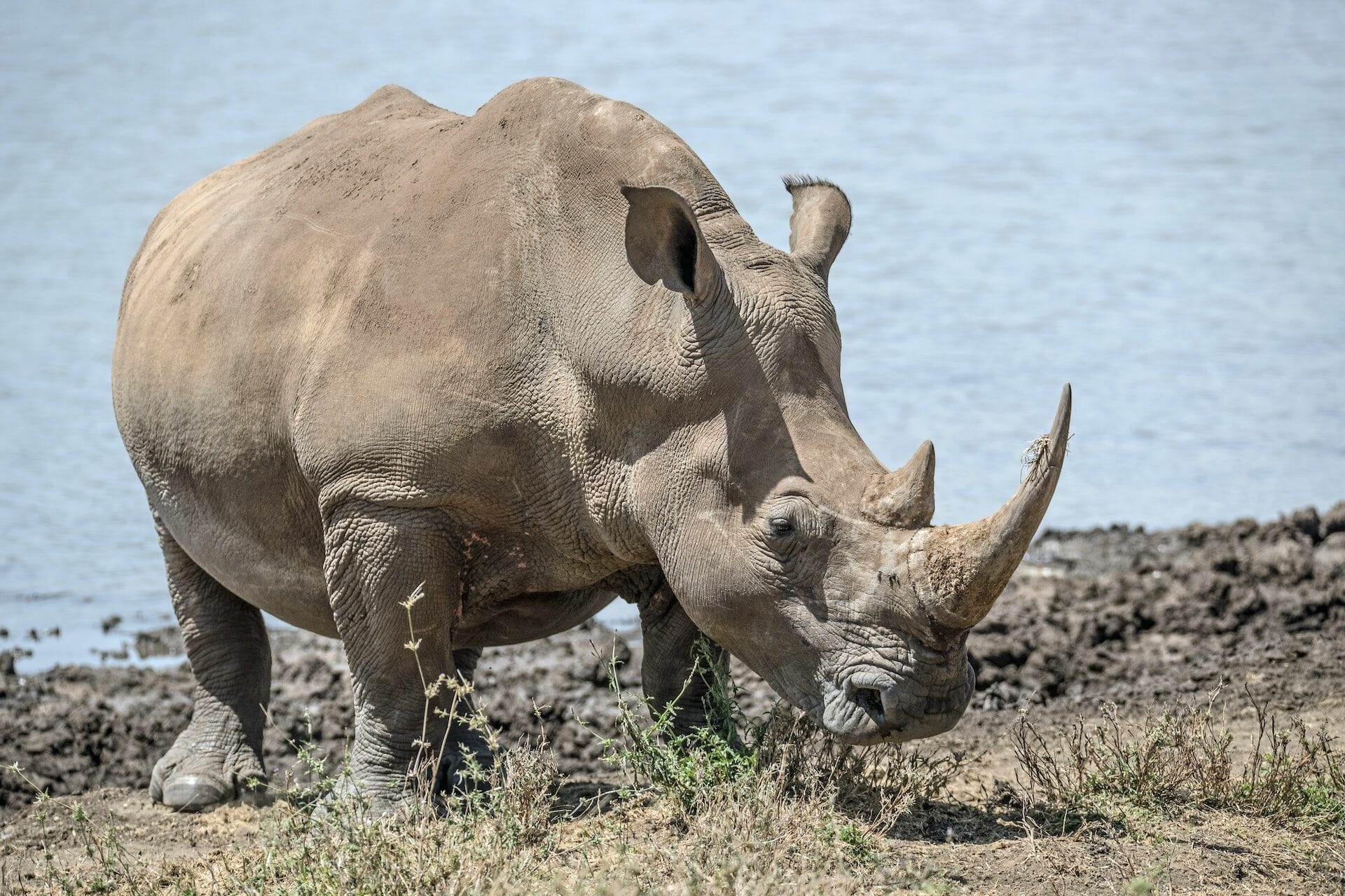White Rhinos & Black Rhinos: Your Questions Answered
If you’re planning a trip to Africa, you may be looking up details about the differences between white rhinos and black rhinos.
As part of the Big 5 animals (lion, leopard, rhino, elephant, and African buffalo), rhinos are some of the most sought-after and incredible creatures in Africa.
What most people don’t know is that there isn’t just one type of rhinoceros. There are actually five types of rhino species!
They are:
- Two African rhino species – black and white rhinos.
- Three Asian rhino species – greater one–horned, Sumatran and Javan rhinos.
Though each rhino has its own characteristics and interests, we are going to focus today on answering your questions about black rhinos and white rhinos. After all, we are Uganda safari specialists!
So, let’s dive in to answer all your questions about white rhinos and black rhinos!
Frequently Asked Questions About The Differences Between White Rhinos and Black Rhinos

What are the physical differences between white rhinos and black rhinos?
- Physical structure – The white rhinoceros looks taller, bigger, and more complex, while the black rhinoceros looks a bit more compact. A white rhinoceros has a relatively flat back.
- Differences in head and horn for rhinos – A white rhino keeps its head to the ground as it feeds on grass. It has a long face, small eyes, and a weak neck. You’ll very rarely see it raise its head. A black rhino does have to lift its head to eat from trees.
- Lips – The white rhino has more of a square, broad, fat lip while the black rhino has a hooked lip.
- Weight – White rhino females get up to about 1,700 kg and white rhino males get up to 2,300 kg. Black rhinos are smaller, with their average weights coming between 800 – 1,400 kg.
- Food – A white rhino has the perfect mouth for grazing, as its broad lips are great for tearing and chewing grass. A black rhino can use its hooked lips to pull plants.
- Where they live – White rhinos tend to spend more time on grassland and exposed areas. Black rhinos may be more often found in the rush areas.
- Horn length – White rhinos have longer front horns and a shorter second horn, while black rhinos have horns that are more equal in length.
- Ears – White rhinos have long ears that help it stay aware while its head is to the ground. Black rhinos raise their heads more often, so they are less reliant on any one sense and have smaller ears.
- Behavior – Black rhinos may be slightly more aggressive, while white rhinos can tend to be more passive.
Which is bigger, white rhinos or black rhinos?

Adult white rhino males can weigh up to 2,300 kg. Black rhinos can get up to 1,400 kg, but usually weigh between 800 and 1,000 kg.
Can white rhino and black rhinos reproduce?
No, black rhinos and white rhinos cannot reproduce. Most rhino species can’t interbreed. There is a chance, though, that among the white rhinos, a northern white rhino could mate with a southern white rhino.
Are black or white rhinos aggressive?
Black rhinos have the reputation for being more territorial, while white rhinos, with their poor eye-sight, are a bit more passive.
How long do black rhinos and white rhinos live for?
Black rhinos and white rhinos have a life-span that can go over forty years.
Where are black rhinos found?
Most black rhinos are found in four African countries:
- South Africa
- Namibia
- Zimbabwe
- Kenya
Where are white rhinos primarily found?

White rhinos are found in a few main countries:
- Primarily in South Africa
- Smaller populations in Botswana, Namibia, Swaziland and Zimbabwe
- Uganda at the Ziwa Rhino Sanctuary
What kind of rhinos are at the Ziwa Rhino Sanctuary in Uganda?
The Ziwa Rhino Sanctuary was finally established in 2005 to re-introduce southern white rhinos back to their natural habitat near Murchison Falls.
The project has grown from the introduction of 6 Southern white Rhinos to 33 – and counting!
Want To See The Southern White Rhino In Uganda?
With Kikooko Africa Safaris, we offer a number of tours through Uganda that include stops at the Ziwa Rhino Sanctuary. You can browse our tours here, or feel free to send us a message to chat about your own tailor-made itinerary to explore Uganda, Rwanda, and Tanzania!




